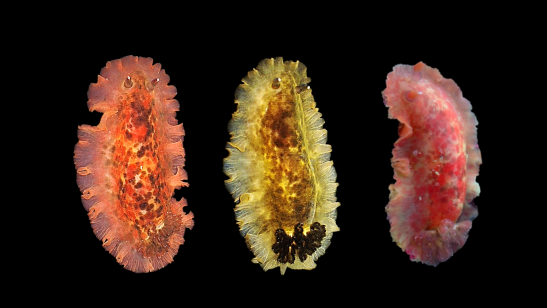O molecular markers they are a necessary tool in many fields such as ecology, biomedicine or forensic sciences as they are used to locate and isolate genes of interest. Currently, there are several molecular techniques that allow us to know how the proportions of specific genes are found and thus to study the diversity between species.
Now, experts from Spanish and American universities rediscovered one new clam, dendrodoris temaranawhich was already described for the first time in 1953, but was considered very similar to another: dendrodoris grandiflora. This discovery, published in zootaxa, was made possible by an approach that combines several molecular markers.
“This species was first described by researcher Alice Pruvot-Fol. It was later erroneously thought to be too similar to D.grandiflora and therefore ceased to exist. In this study, we verified, with the help of DNA, that Pruvot-Fol was correct in its interpretation 70 years ago”, he explains to SINC Carles Galià-Campsfrom the Department of Genetics at the University of Barcelona (UB) and first author of the study.
An old relative is back
Nudibranch molluscs of the genus dendrodoris characterized by the lack of radula and spicules on the dorsum, important taxonomic features that help to differentiate and distinguish these marine animals. Without them, it is difficult to identify species if we only look at their shape.
Thus, it is not surprising that D. temarana been ruled out as a ‘valid’ species for so long. It is a pseudocryptic organismthat is, it presents differences that are imperceptible to the human eye and genetic analyzes are necessary to determine them.
Consequently, these animals may remain unknown and unstudied, which can be misleading when assessing their diversity.
“Pseudocryptic species are those that are physically very similar to others, but that can be identified molecularly and later find the differences that characterize them. The separation of vertebrates can be very evident, but in taxa such as molluscs, arthropods or jellyfish things are much more complicated,” says Galià-Camps.
‘Dendrodoris temarana’ on an underwater rock. Photo courtesy of Carles Galià-Camps
On the DNA trail
Analysis of molecular markers COI, 16S and H3, based on 47 specimens of dendrodoris of the North Atlantic Ocean and the Mediterranean Sea, not only revived D. temaranabut also revealed that it shares a ancestor with five other species of molluscs.
Using morphological and anatomical data from 14 additional individuals and a review of the literature, the scientists morphologically redescribed (color pattern, gills, rhinophores and anal papilla), anatomically (nervous, circulatory, digestive and reproductive systems) and biologically to the mollusc already described in 1953.
Used to living near rocks, “it helps to maintain and stabilize the marine ecosystem of its habitat, where it can control the growth of some organisms through predation. Studies are currently being carried out on their diet to validate this theory, empirically proving what their prey are and how they can affect the food chain”, concludes Galià-Camps.
Reference:
GALIÀ-CAMPS, CARLES, et al. Attack on crypsis: Molecular and morphological study of Dendrodoris Ehrenberg, 1831 (Mollusca: Gastropoda: Nudibranchia) from the Mediterranean Sea and North Atlantic Ocean reinstates Dendrodoris temarana Pruvot-Fol, 1953. Zootaxa, 2022, vol. 5133, no. 3, p. 383-406.
